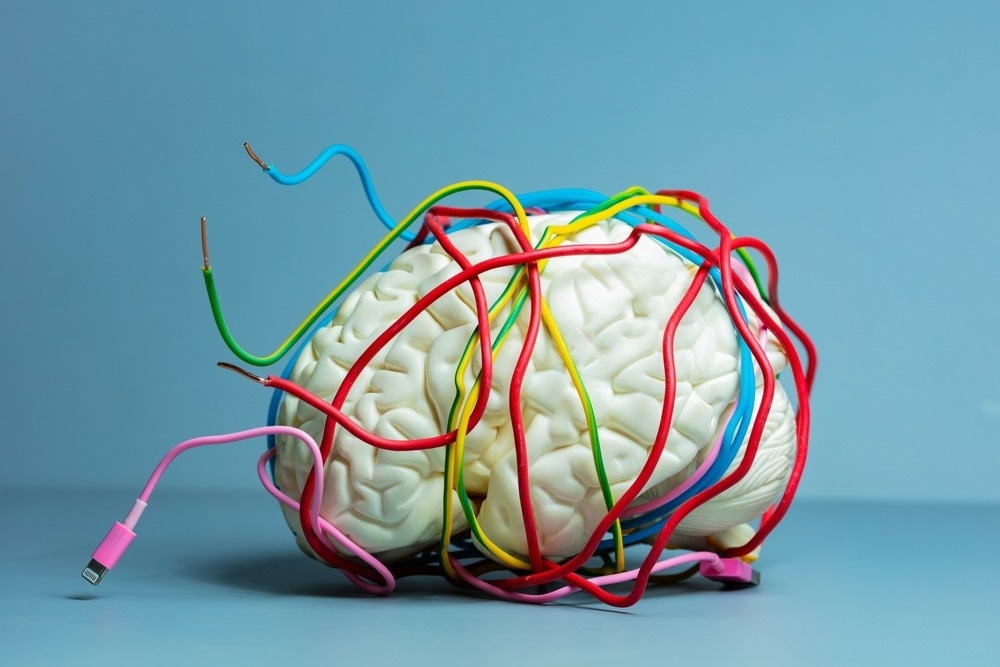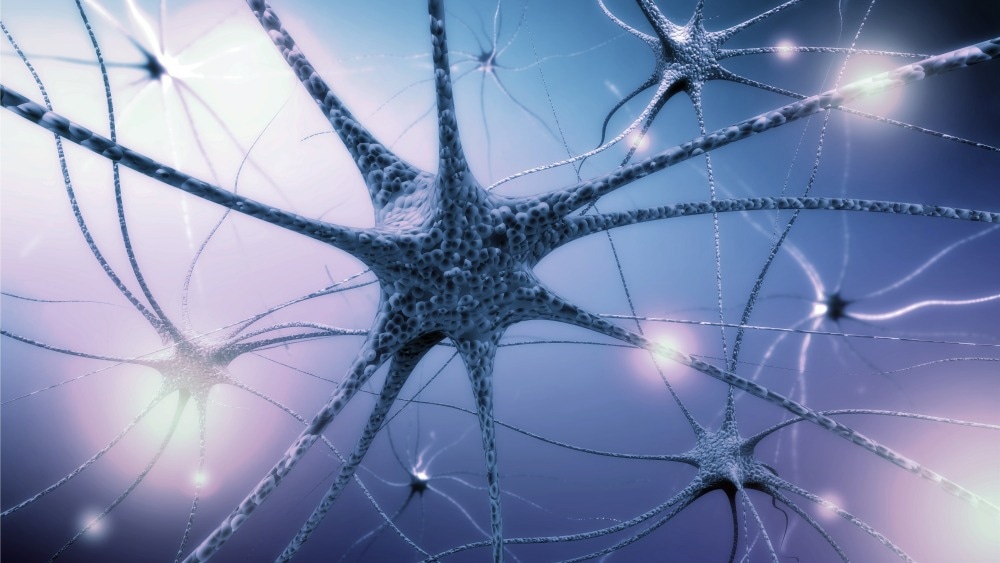The science of bioelectronic medicine
Therapeutic applications of bioelectronics
Advancements in bioelectronic technology
Challenges and ethical considerations
Integrating bioelectronics in healthcare
Conclusion
References
Further reading
Bioelectric medicine involves the use of implanted devices that stimulate targeted nerves within natural signaling pathways in order to achieve a therapeutic effect.[1]

Image Credit: Sergey Novikov/Shutterstock.com
Neuromodulation can aid with the unmet needs of several diseases, including heart failure, hypertension, inflammation, asthma, arthritis, Alzheimer’s disease, and diabetes.[1] There are also novel approaches that aim to intervene with the neuronal signaling that is involved with cancer progression. Overall, this type of therapy may hold potential for health conditions that conventional pharmaceutical treatments cannot appropriately manage.1
The science of bioelectronic medicine
With the presence of many signaling pathways within the nervous system, targeted effect through therapeutic intervention, such as with bioelectronic medicine, can be a significant avenue to counteract dysfunctionality in the body.1
This innovative approach utilizes bioelectricity as a fundamental unit of communication within the body, with bioelectric signals traveling through the nervous system in order to carry critical messages that ultimately control the functionality of organs.1 The electronic signals consist of information that can be recorded and combined with neural digital therapies, which can then be used to achieve a controlled therapeutic effect.1
Neural therapy approaches already exist in clinical practice for a range of different health conditions relating to the cardiovascular and neurological systems, as well as inflammatory disorders.1 These approaches aim to target either the central nervous system (CNS), including the brain and spine, or the peripheral nervous system (PNS), which includes the nerves that communicate messages from the brain to the organs.1
Therapeutic applications of bioelectronics
There are many diseases and conditions that can be targeted by bioelectronic therapies. An example includes an implantable electrode that targets the CNS for the treatment of traumatic and neurodegenerative disorders known as deep brain stimulation (DBS), which first gained Food and Drug Administration (FDA) approval in 1997 for an essential tremor in Parkinson’s disease. DBS can also be used to target pain, obsessive-compulsive disorder, Tourette syndrome, Alzheimer’s disease, and major depression.1
Another target comprises the spinal cord, for example, to relieve chronic pain.[1] The FDA approved a spinal cord stimulation system by Nevro Corporation in 2018, which applies electrical pulses to the spinal cord via a battery-powered generator that is implanted below the skin in order to relieve chronic pain.1,2
This system works by radio signals received by the implanted signal generator from the remote control; the signal then communicates with the signal generator to deliver the appropriate signal to the spinal cord at the right time.2 The remote control, which is a battery-operated external device, can be controlled by the patient or the healthcare provider.2

Image Credit: Billion Photos/Shutterstock.com
This system can be used to manage chronic pain, including one-sided or two-sided pain that is associated with various situations, including failed back surgery syndrome, chronic lower back pain, leg pain, nerve damage pain produced by diabetes, and refractory back pain when a patient is not suitable for back surgery.2
With chronic pain, including low back and leg pain, being the predominant cause of disability worldwide, the use of an innovative approach to managing pain may be critical.3 Interestingly, a study published in Scientific Reports in 2018 comprised pooled data from two prospective trials on 10 kHz spinal cord stimulation (SCS) in patients with chronic low back pain or leg pain and investigated post-hoc analysis on opioid dosage variations 12 months after SCS treatment.3
The analysis of the study concluded that this therapeutic technology provided evidence of its use as a non-pharmaceutical alternative to opioid treatment.[3] SCS can also be used as an adjunctive therapy to facilitate a dose reduction while on opioids to reduce significant pain.3
Advancements in bioelectronic technology
The bioelectronic medicine market is estimated to grow from $20 to $60 billion by 2029, with neuromodulation aiming to provide treatments for many different diseases with unmet needs.4 By investigating bioelectric signals that are collected from the body, malignant cancers can be identified faster and treated successfully.4
Electrical activity sensing consists of using bioelectricity for both diagnostic and prognostic applications, which involves electric fields to stimulate morphological changes.4 Bioelectronic medicine provides a more natural alternative to chemotherapy and surgery with a lower risk rate.4
Additionally, cancers of the pancreas, stomach, skin, and malignant brain tumors have been associated with dysfunctional brain signals, which enable novel therapeutic technologies to provide innovative solutions potentially.4
Advances in the field of bioelectronic medicine may be promising for the challenges in conventional treatment and providing enhanced personalized medicine.5 Recent clinical trials have shown it may be possible to target the ‘inflammatory reflex,’ which includes the critical role of the vagus nerve in maintaining immunological homeostasis.5 This is significant as it demonstrates the potential of developing therapeutic devices that can record and modulate neural signals within inflammation-regulating reflex circuits.5
Challenges and ethical considerations
One of the challenges for developing bioelectronic therapies includes the optimization of hybrid configurations in electrodes and devices, as well as in the process of miniaturization.6 Research into polymer processing as a core approach for developing flexible and implantable devices may be an innovative approach for bioelectronic devices.6
Additionally, there is also a range of ethical considerations related to bioelectronic medicine, including informed consent, research ethics, as well as the ethical implication of modifying the brain, which can affect autonomy and free will, as well as impact the mind.7 Institutional review boards play a significant role in addressing ethical and safety concerns to facilitate the appropriate regulatory and educational standards.7
Integrating bioelectronics in healthcare
Mechanistic insight into the central nervous system for health conditions is significant in bioelectronic medicine, with brain function modulation being exploited in neurological diseases such as Parkinson’s disease and Alzheimer’s disease.6
Bioelectronic devices have the potential to be used in future healthcare scenarios, with available devices already being in clinical and exploratory use for the treatment of neurodegenerative disorders, including DBS and transcranial magnetic stimulation.6
With emerging bioelectronic technologies being researched for various health conditions, including the role of the nervous system in obesity and diabetes, healthcare professionals may have to prepare for significant progress in diabetes technology, such as real-time continuous glucose monitoring.6
Conclusion
Overall, there may be significant implications and improvements with the advancement in bioelectronic medicine and the emergence of bioelectronic devices, which have the potential to aid in various interdisciplinary fields. With a few FDA-approved devices already existing in clinical practice, therapeutic technologies may be the pathway to novel treatments for diseases without cures, including neurodegenerative disorders, as well as other health conditions.1
References
- Lee SK, Jeakins GS, Tukiainen A, Hewage E, Armitage OE. Next-generation Bioelectric Medicine: Harnessing the therapeutic potential of neural implants. Bioelectricity. 2020;2(4):321-327. doi:10.1089/bioe.2020.0044
- Center for Devices and Radiological Health. Senza spinal cord stimulation (SCS) system – P130022/S042. U.S. Food and Drug Administration. Accessed December 29, 2023. https://www.fda.gov/medical-devices/recently-approved-devices/senza-spinal-cord-stimulation-scs-system-p130022s042.
- Al-Kaisy A, Van Buyten J-P, Carganillo R, et al. 10 khz SCS therapy for chronic pain, effects on opioid usage: Post hoc analysis of data from two prospective studies. Scientific Reports. 2019;9(1). doi:10.1038/s41598-019-47792-3
- Singh AK, Awasthi R, Malviya R. Bioelectronic medicines: Therapeutic potential and advancements in next-generation cancer therapy. Biochimica et Biophysica Acta (BBA) - Reviews on Cancer. 2022;1877(6):188808. doi:10.1016/j.bbcan.2022.188808
- Olofsson PS, Tracey KJ. Bioelectronic Medicine: Technology targeting molecular mechanisms for therapy. Journal of Internal Medicine. 2017;282(1):3-4. doi:10.1111/joim.12624
- Pavlov VA, Tracey KJ. Bioelectronic Medicine: Updates, challenges and paths forward. Bioelectronic Medicine. 2019;5(1). doi:10.1186/s42234-019-0018-y
- Packer S, Mercado N, Haridat A. Bioelectronic medicine—ethical concerns. Cold Spring Harbor Perspectives in Medicine. 2018;9(10). doi:10.1101/cshperspect.a034363
Further Reading
Last Updated: Jan 15, 2024